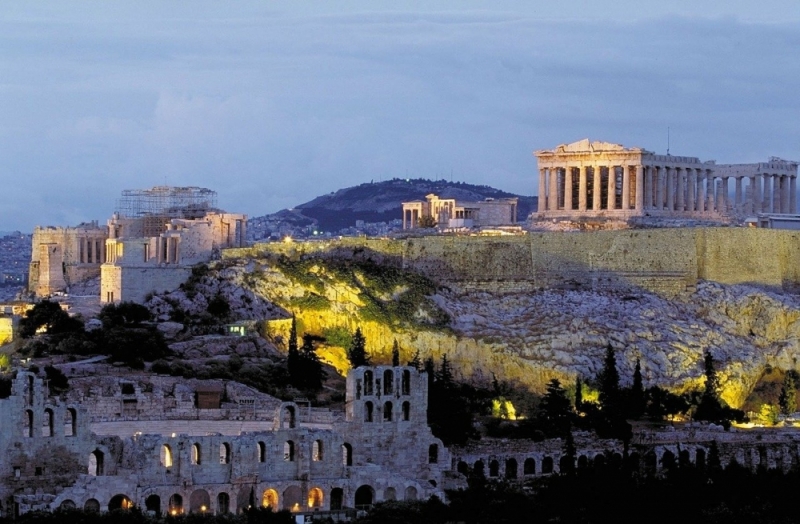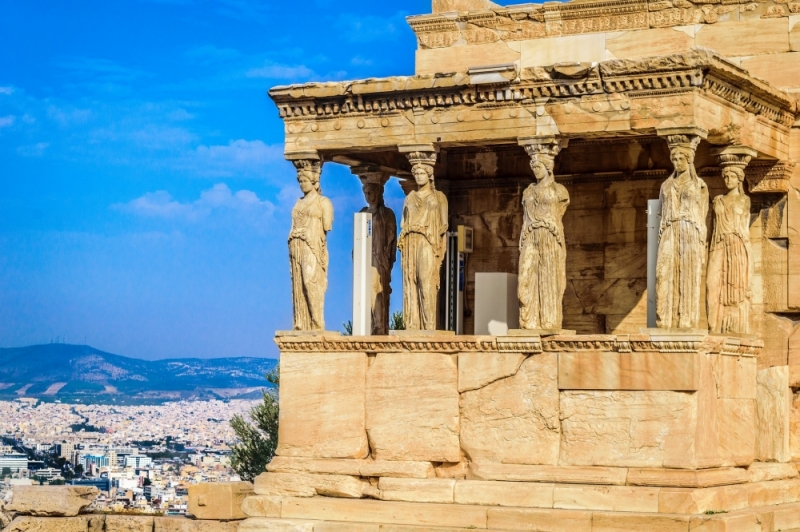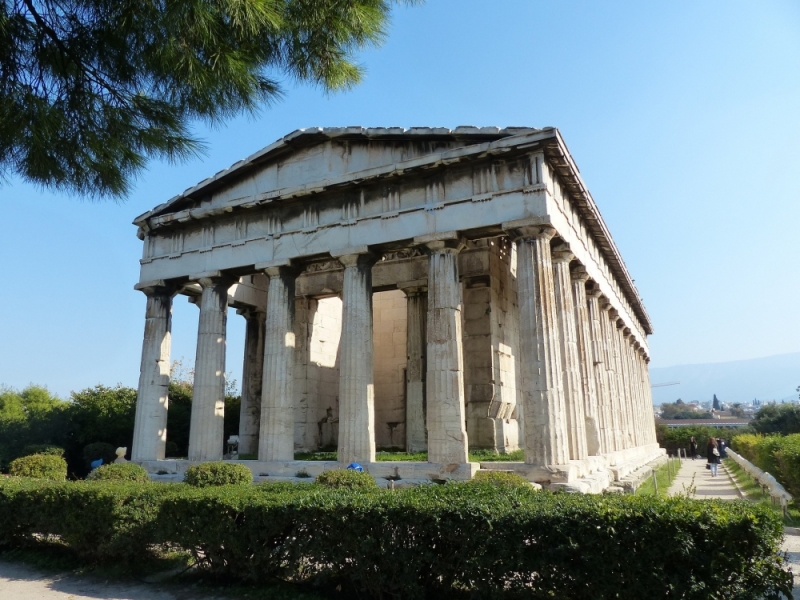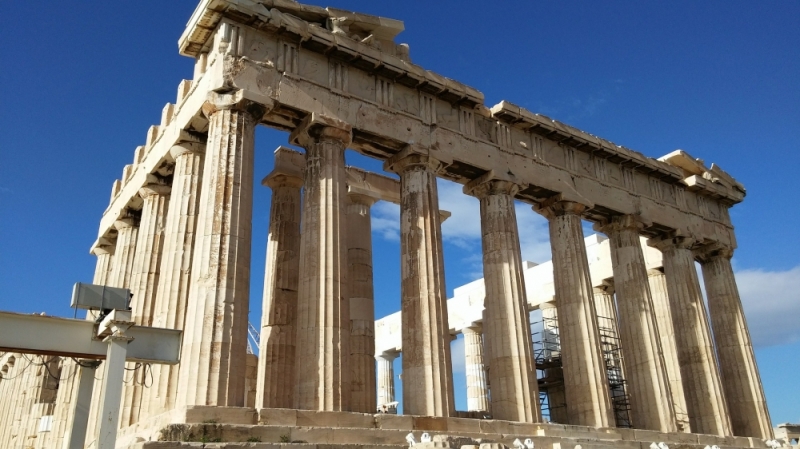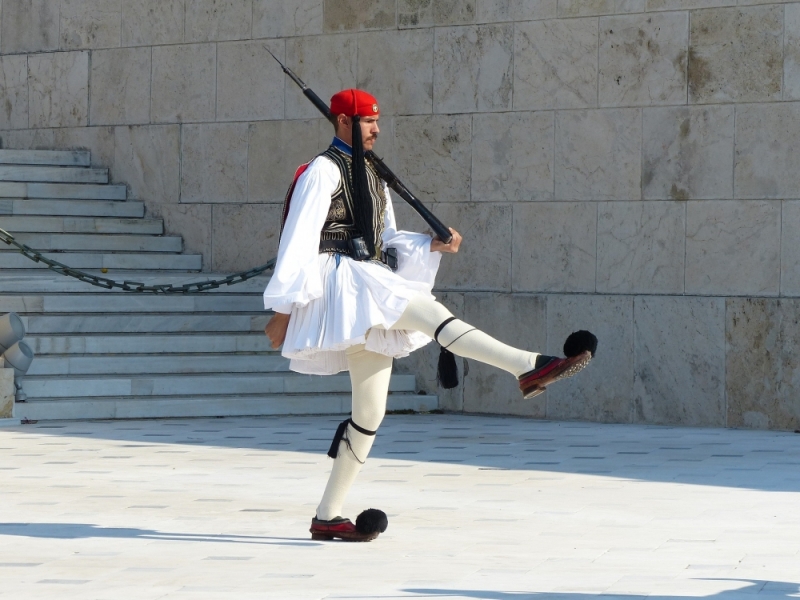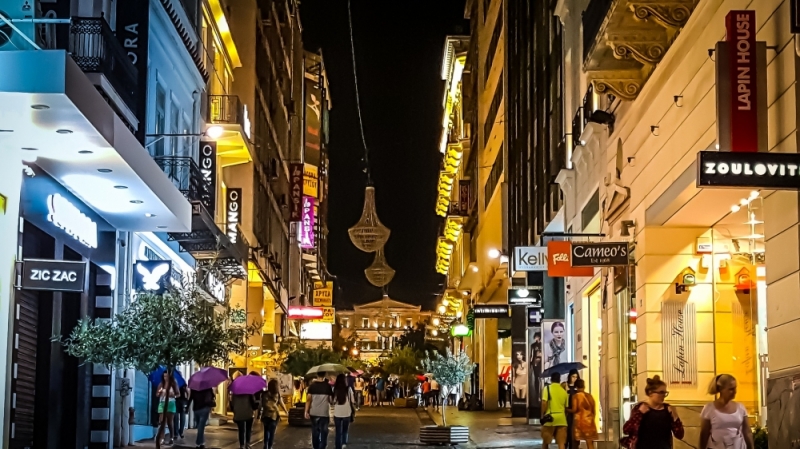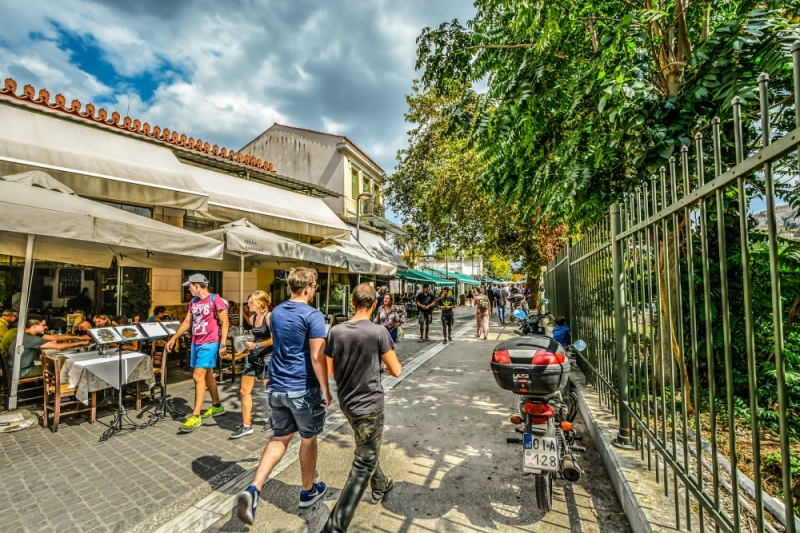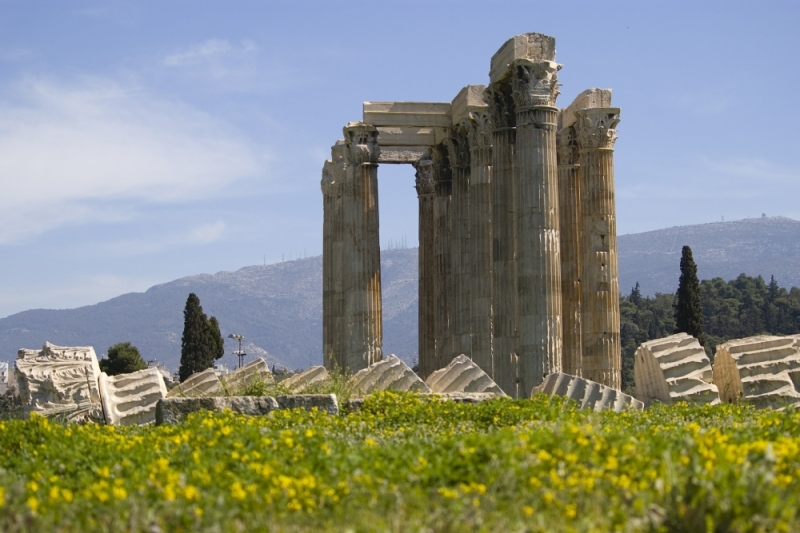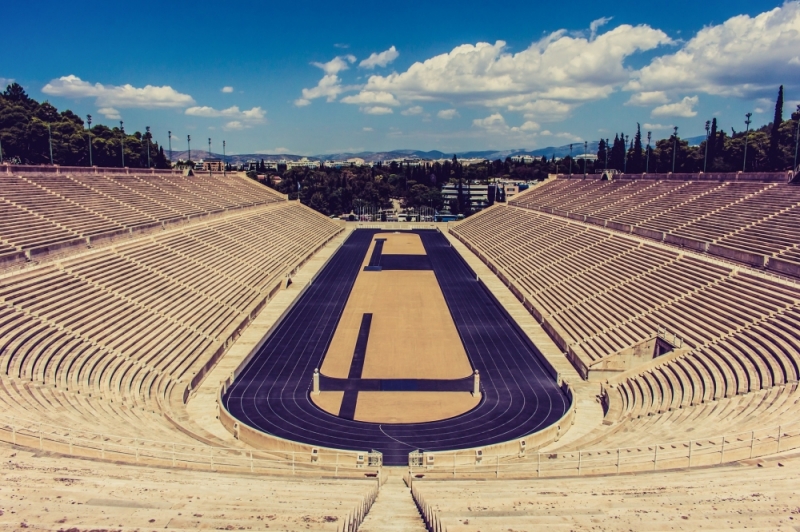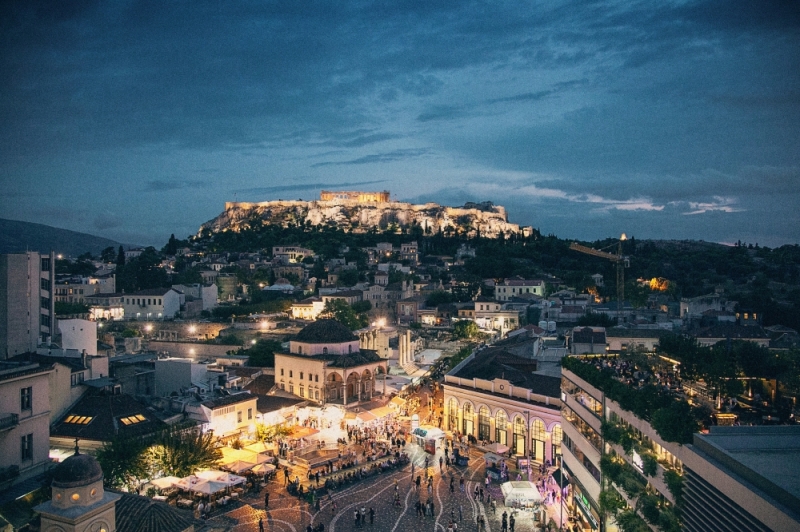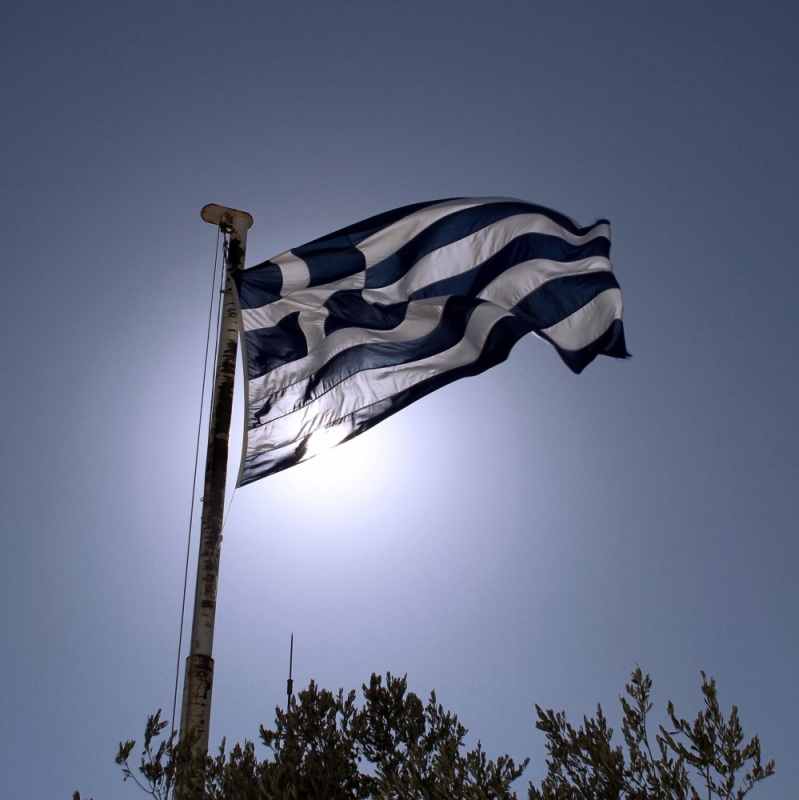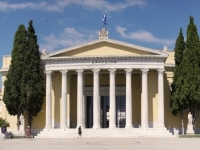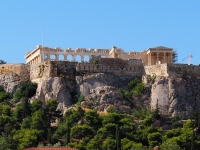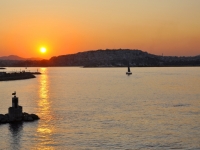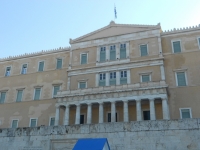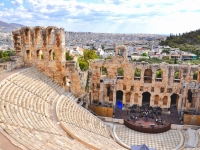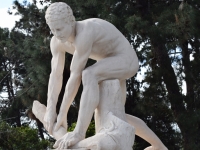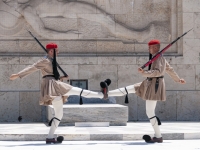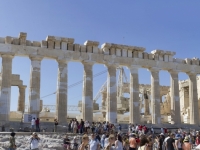Athens and its origins
Athens was and is the capital of Greece, but it is also the capital of literature, art and philosophy. It was the city that gave birth to important historical figures, such as Socrates and Plato and it is always here that democracy originated. Athens is one of the oldest cities in the world, in fact, the first settlements date back to the Neolithic, but it was between 1500 and 1600 BC that the Mycenaean Civilization developed and, around the acropolis, the polis began to develop. The Dorians invaded Athens and destroyed the Mycenaean civilization which fell into decline for about 300 years. In the 5th century BC. C., with the arrival of the classical age, Athens experienced a rebirth and became the most important center of the entire Greek world, laying the foundations for all of Western civilization. In 27 BC Athens and all of Greece were annexed to the Roman Empire and Rome, capital of the Empire, took away Athens' fame as the capital of Western culture. After the fall of the Western Roman Empire, Athens experienced a new development, thanks to the Crusades and, above all, to trade in the Mediterranean until it was occupied by the Turks, becoming the dominion of the Ottoman Empire from which it managed to obtain independence only in the first decades of the nineteenth century. Having obtained independence, Greece worked on the rebirth of the new state, with Athens as its capital. Athens obtained the first opportunity to show itself to the world as the modern capital of the new Greek State in 1896 when it organized the first modern Olympics. Athens was chosen as the first host city of the Olympics, in honor of the ancient Olympics which took place in the City of Olympia for about 1200 years, starting from the 8th century BC. C.. In 2004, Athens hosted the Olympic Games again and this was a particular edition, as it was the first in which athletes without a National Olympic Committee were able to participate as part of an Olympic Committee. Thanks to the awarding of these new Olympics, Athens underwent a renewal between the end of the 90s and the beginning of the new millennium, as this event was supposed to be, for Greece, a point of departure and rebirth for the State and for the Athenian city. But the crisis that hit Greece starting at the end of 2008 thwarted this renewal and today, in the city, as in all of Greece, there is a high rate of unemployment.
What see
As we have already said, Athens is a very ancient city and its antiquity is evidenced by its largest monument, the Acropolis of Athens , the most important of the Greek acropolis. The Acropolis was the upper part of the city, in fact that of Athens is located on a hill 150 meters above sea level. To access the Acropolis, you will pass through the Propylaea , the monumental portico with Doric columns that serves as the entrance to the Acropolis, in the center of which you can see the Parthenon , a magnificent Doric-style temple, dedicated to the goddess Athena, which the Ancient Greeks considered patron of the city. The Parthenon was built to celebrate the victory of the Greeks over the Persians and inside was placed a colossal bronze statue of Athena , made by Phidias, about 9 meters high. Unfortunately, due to the various invasions suffered by Athens over the centuries, the statue has been lost. Inside the Acropolis, you can also see the remains of many other temples, such as the Erechtheion , an Ionic-style temple, behind which, attached to it, is the sanctuary of Athena Poliàs , dedicated to Athena patron of the city . The Erechtheion and the sanctuary of Athena stand one next to the other, almost like a single temple. There are also many temples dedicated to many gods, such as the one dedicated to Zeus, or to Aphrodite and Demeter. When you visit the Acropolis of Athens, you will feel transported back in time for over 2000 years and relive the history of the Ancient Greeks that until then you had only read in history books.
The Agora
Coming down from the acropolis, you will find yourself in the Agora of Athens , a very large area where the main square of ancient Athens once stood. It was here that the Ancient Greeks met to discuss the most important decisions. Also here, the market was held and philosophers exhibited their studies and thoughts. It was always here that in 399 BC. C., a philosopher, Socrates, was sentenced to death and executed because he was considered by politicians to be a dangerous political enemy who contested city values. In the Agora there were also some important buildings such as the Temple of Aphrodite Urania and above all the Temple of Hephaestus , one of the best preserved temples that have come to us from Greek antiquity, but also the Altar of the Twelve Gods which was discovered only in 2011 , during the extension works of the railway. This altar is one of the most important found monuments, one of the main points of the ancient Greek city. From the altar all distances were measured, as it was considered the exact center of the city.
Acropolis museum
To complete your immersion in the history of Ancient Greece and Ancient Athens, we suggest you visit the Acropolis Museum which contains everything found on the Acropolis of Athens. The museum is located at the foot of the Acropolis and in its three floors you will find many exhibits, sculptures and pieces belonging to what were the buildings that made up the ancient city. There are the Caryatids which were 5 sculptures, represented priestesses who served as columns in the temple of the Erechtheion, or you can see, in the room on the third floor, dedicated to the Parthenon, pieces that belonged to this beautiful temple, as parts of the frieze, of which you have been able to see a part of it if you have visited the British Museum in London. A few steps from the museum you can see the Theater dedicated to the Greek god of wine and theater, Dionysus . This is the most important theater of Greek art and some of the most important authors of Ancient Greece have represented their works here, such as Sophocles, Euripides and Aristophanes. Adjacent to the theater stood the Sanctuary of Dionysus , of which, however, today it is possible to admire only the remains.
Piazza Syntagma
Syntagma square is the modern heart of Athens. This is where the Parliament Building is located and there are always the Evzones , two guards with the fustanella, the characteristic Greek uniform, guarding the monument to the Unknown Soldier . If you want to watch the changing of the guard , you can do it by going to the square on Sunday morning at 10 when there is the official ceremony, even if a simpler ceremony is still held every day. Syntagma Square is the place where the great historical events of Greece took place, in fact, it is here that in 1843 Ottone I granted the constitution to the Greeks and it is always here that political demonstrations and strikes are often held and we do not exclude that, during your stay in Athens, may you find some. If there are demonstrations, we recommend that you pay close attention, as you may find yourself at the center of the clashes, during which tear gas is also thrown.
Plaque
A very popular district for tourists and not far from Syntagma Square is Plaka , a very ancient area of Athens where the first inhabitants settled there during the classical period. Today, Plaka is the neighborhood of taverns, bars and souvenir shops that are located in characteristic shops and numerous neoclassical buildings, dating back to the nineteenth century, which are located along the streets of the neighborhood. To get to this part of the city, you can take Ermou , the most famous commercial street in Athens, also taking advantage of it to do some shopping. One of the most beautiful spots in Plaka is Anafiotika , an area of the neighborhood whose buildings resemble those of the Cyclades islands. In this area you can admire the "Roman" part of Athens. Here, in fact, you will find the Torre dei Venti , a structure dating back to Roman civilization, which is the center of the ancient Roman agora .
Monastiraki
Near the Plaka district there is another very important square in Athens. This is the Monastiraki square which also gives its name to the neighborhood of the same name. This neighborhood is famous for its flea market , where you can buy antiques, CDs, books, vintage clothes. Here you can also visit the Tzisdaraki mosque and the Museum of Greek Folk Art . But Athens is full of squares in fact there is also Omonia Square which, despite having lost the charm of the past, is still one of the main points of the city. Here, in fact, there is the Km 0 of Greece, from which the main roads depart. In addition, a few steps from the square, there is the Central Market which is located in a beautiful building dating back to the 19th century.
Roman agora
Wanting, once again, to go back in time, a few steps from the Museum of Greek Folk Art, you can visit the Temple of Olympian Zeus , one of the largest temples in Greece, which was started in the Hellenistic period and ended in the Roman period, during the Hadrian Empire. The temple was composed of 104 Corinthian columns, of which today it is possible to see only 15 which have remained standing. There is a sixteenth column, however, which has fallen instead. This column is there, fallen on the pavement of the temple, since 1852, when, during a storm, lightning struck it, causing it to fall. Next to the Temple of Zeus, in honor of the Emperor Hadrian, an arch was erected, known by the name of Hadrian 's Gate , which separated the Hellenic city from the Roman one. In addition to the door to separate the two cities, a library was built that bore the name of the emperor and which housed a large collection of books he owned.
Stadio Panathinaiko
For all sports lovers and not only, a visit to the Panathinaiko Stadium is not to be missed. This stadium was built to host the Panathenaic Games, in 330 BC. These games were important because they were made in honor of the Goddess Athena, but they were less prestigious than the Olympic Games. The stadium was discovered in 1870, following a great deal of archaeological excavation. Once brought to light, a major restoration work was undertaken which made it possible to use the stadium for the competitions of the First Modern Olympiad, held in Athens in 1896.
Movida and entertainment
But a weekend in Athens does not just mean traveling through history, seeing monuments and visiting museums. Athens is also much more, in fact, the Greeks love to go out, have fun and live the street. First of all, know that here the nightlife starts very late, unlike the capitals of central and northern Europe. In fact, the restaurants' kitchens are open until two in the morning. There are many areas of the city that are famous only and exclusively for nightlife. There is, for example, the Gazi district, the famous neighborhood that never sleeps. Here there are many theaters, restaurants, bars, taverns but also night clubs and strip clubs, for lovers of the genre. Gazi was the place where an old gas plant once stood, which with the help of the architect Renzo Piano, has been transformed into Technopolis , a cultural center where there are often exhibitions and events, but where you will also find restaurants and bars. In Technopolis you can find, for example, the Christmas markets during the Christmas period but if you go to Athens in the summer you can find yourself there while the great Euoropean Music Summer Festival takes place. As previously mentioned, Plaka is also a very lively district, even if the premises are often overcrowded and it is therefore more difficult to find places to sit, furthermore, being a very touristy neighborhood, prices will be higher than in other areas of the city. Also near Syntagma Square, along the streets parallel to Ermou, the main avenue, you will find numerous clubs where they make techno, rock and even jazz music. For those who want to try something more exclusive, but also more expensive than the typical prices of Athens, we offer the Galaxy Terrace at the Hilton hotel, where you can dine or simply have a drink on a beautiful terrace overlooking the Acropolis . If instead you want to completely immerse yourself in Greek culture then you cannot miss the places where there are the shows of Bouzoukia where there are singers who play Bouzouki, a stringed musical instrument, whose origins date back to Ancient Greece and which reminds a little the Neapolitan mandolin. Well, in these shows, while the musician plays, in the center of the room, the people in the room dance under cascades of flowers. It is an experience that we absolutely recommend you to try, as it will overwhelm you. Finally, we want to give advice to the most romantic. If you happen to Athens during the full moon nights, know that the Acropolis will remain open for anyone who wants to go to the hill in order to admire the immense moon in the sky. It really is a wonderful image.
Climate, curiosity and advice
Climate : Athens is a city with a Mediterranean climate with mild and little rainy winters and hot summers, however, being in the Balkan Peninsula, during the winter masses of cold air could arrive that can bring rain, wind and sometimes even snow, especially in the north of the city. Instead, in summer Athens often turns out to be the hottest capital in Europe, with temperatures reaching 40 ° C in the months of July and August and also know that from May to September it rains very little. In 5 months the rainy days will be around 10, on average two rainy days a month. Spring and autumn are the best times to visit Athens, as you will have hot but cool and not too rainy days.
Curiosity: But do you know that the Parthenon was intact until 1687? The Greek temple dedicated to the Goddess Athena has resisted the passage of centuries and millennia but has not resisted a bomb fired by a mortar of the Venetians who had settled on the hill of Filopappo. The Turks, who had settled on the heights of the Acropolis, used the Parthenon as a powder keg and the Venetians, having discovered this information, fired directly on the large monument, destroying part of it. The rest was then the work of Lord Elgin, an English gentleman, who brought parts of the Parthenon to London. In fact, at the British Museum in London you will find original parts of the Parthenon, while in the Acropolis museum in Athens you will find copies.
Tips: Visiting Athens will take time and many trips. For this reason we advise you to make a subscription to the Athens metro, which is very efficient and, in order not to waste time with tickets and queues, we suggest you buy all the tickets online, so that when you are in the city you can easily enter the archaeological sites but without having to queue.


